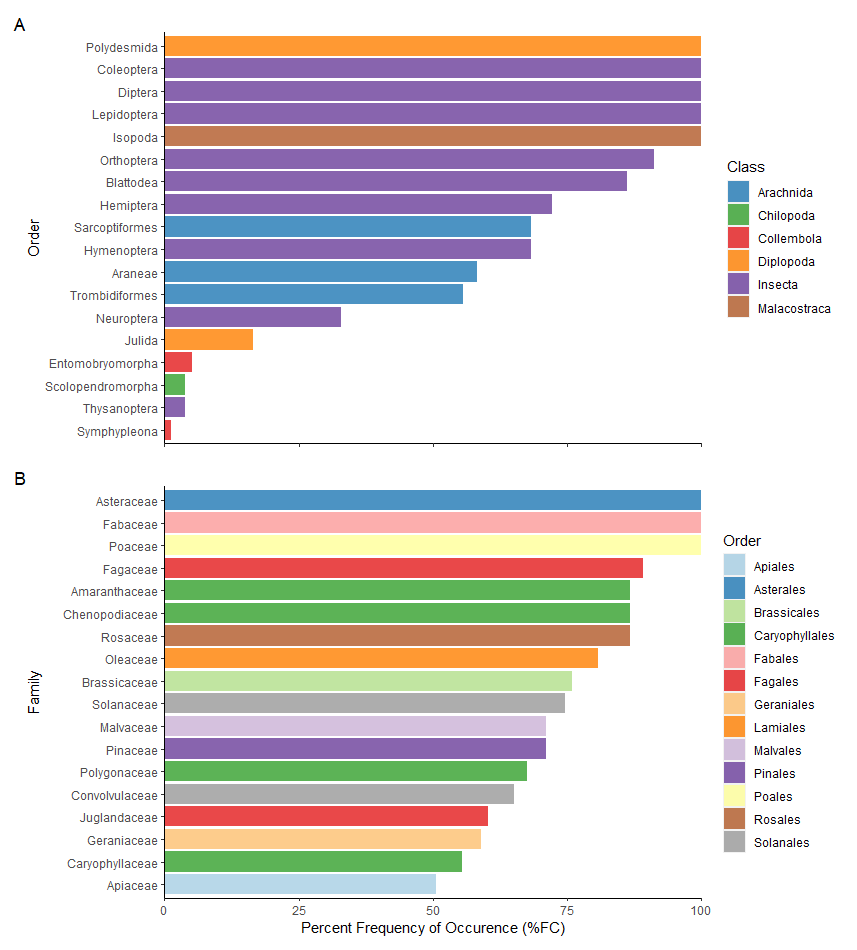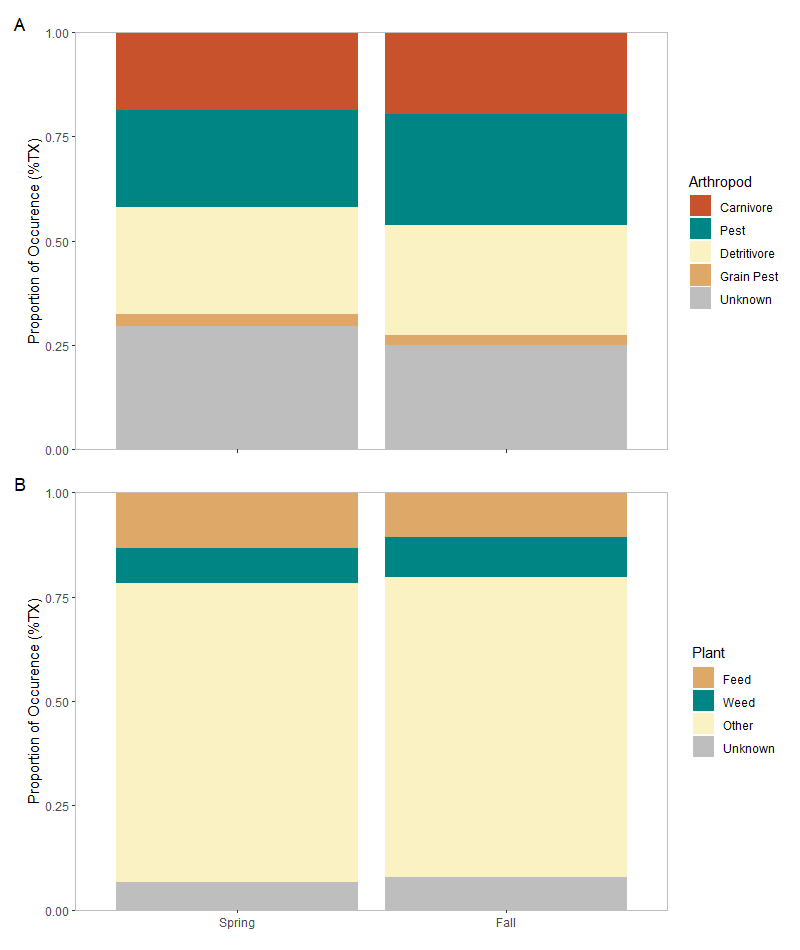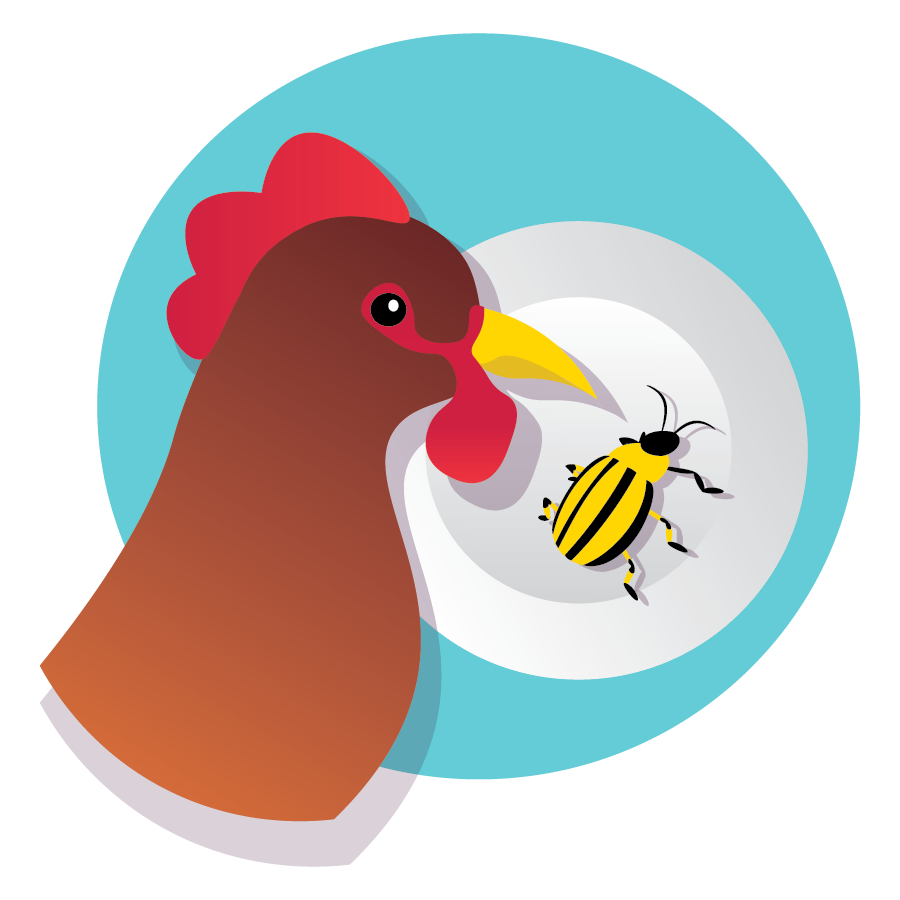We collected chicken fecal samples from 8 farms 2020-2022. A subset of these samples (96) had DNA extracted and sequenced so we could determine what plants and arthropods chickens were eating. We were able to identify 88 species of insects, 4 species of spiders, and 4 species of other arthropods, and 157 species of plants, from these fecal samples.

This figure shows the arthropods and plants we detected most often from fecal samples. Panel (A) shows arthropod orders, and panel (B) shows plant families. Bars are colored according to the key on the right. We found that 100% of our samples contained millipedes (Polydesmida), beetles (Coleoptera), flies (Diptera), caterpillars (Lepidoptera), and pill bugs (Isopoda). We also found 100% of our samples contained flowering plants like sunflowers (Asteraceae), beans (Fabaceae), and grasses (Poaceae).
We also characterized each separate taxa (species, genus, and family) into an ecological guild to better understand how they interact with the environment. Arthropods were classified as carnivores (eats or parasitizes other arthropods), pest (crop or livestock pests), detritovores/decomposers, or grain pests (arthropods associated with stored grain or animal feed). Plants were classified as feed (plants found in feed or pasture or provided by the grower as food scraps), weeds, or other.

This figure shows the proportion of occurrence, or how often arthropods and plants of a specific ecological guild are being eaten compared to others. Panel (A) shows arthropods and panel (b) shows plants. Bars are colored according to the key on the right. The left side of each panel shows diet items from samples collected in spring, and the right side diet items from samples collected in fall.
We found that both arthropod and plant diet of chickens was not significantly different between spring and fall. In both seasons, carnivore, pest, and decomposer arthropods made up roughly the same amount of the diet. Feed and weed plants together made up less than 25% of the diet, while plants classified as other made up the majority. From our preliminary data, we cannot say for sure whether chickens have a net positive or negative effect on biological control.
